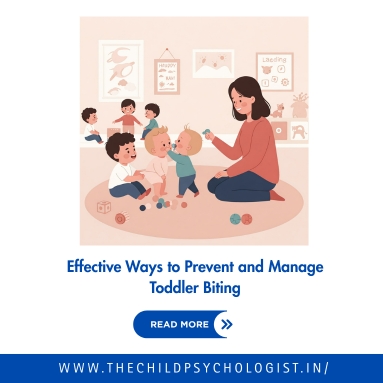Dealing with a toddler’s biting behavior can be a challenge for parents and caregivers. It’s essential to understand that while biting is a common developmental stage, there are many effective strategies to prevent and manage this behavior. With the right approach, parents can guide their children through this phase, teaching them healthier ways to express themselves.
Preventive Strategies
1. Understanding the Triggers
The first step to managing biting is identifying the triggers that prompt it. Pay attention to the situations in which your toddler is most likely to bite—whether it’s out of frustration, fatigue, hunger, or anxiety. Recognizing these triggers will help you intervene early and prevent biting.
2. Creating a Supportive Environment
Ensure your child’s environment is conducive to positive social interaction. A clutter-free space with minimal noise and distractions can help reduce irritability and frustration. Close supervision during playtime also ensures that issues like biting can be quickly addressed before they escalate.
3. Offering Healthy Alternatives
- For Oral Stimulation: Teething toys or crunchy snacks can serve as alternatives to biting.
- For Teething Discomfort: Chilled teethers or soft cloths can soothe sore gums and reduce the urge to bite.
- For Boredom: Keep your toddler engaged with new toys or sensory activities to distract them from biting.
- For Anxiety: Stick to a predictable daily routine, and talk about any upcoming changes to prepare them.
4. Teaching Communication Skills
It’s vital to help your child develop communication skills. Teach them to use simple words or even sign language to express their needs and feelings. Role-play situations where they can practice asking for help or communicating frustration instead of resorting to biting.
Managing Biting Incidents
1. Respond Calmly
When an incident occurs, it’s crucial to stay calm. Reacting with anger or frustration can make the situation worse. Instead, calmly explain to your child why biting isn’t acceptable, using simple language such as, “Biting hurts.”
2. Take Immediate Action
Gently but firmly remove your child from the situation, making it clear that biting is not allowed. Direct your attention toward the child who was bitten, offering comfort and empathy.
3. Role-Playing Alternative Actions
Once the situation has calmed down, engage in role-playing. Show your child how to express frustration without biting, like asking for a toy or using words to express their needs.
While toddler biting is a natural developmental phase, it doesn’t have to be a permanent behavior. By understanding the causes and using preventive strategies, parents can guide their toddlers through this stage. Consistency and patience will lead to healthier ways of communicating and interacting.
Strategies to Help Improve Your Child’s Frustration Tolerance
As children grow, learning to manage frustration becomes a vital skill. Every child faces moments of frustration, and developing the emotional tools to handle it can significantly enhance their well-being. Here are three strategies that can help improve your child’s frustration tolerance:
1. Encourage Patience Through Waiting
Teaching your child to wait is an excellent way to build their tolerance for frustration. In a world that thrives on instant gratification, children often struggle with the concept of waiting. Regularly practicing waiting can help. For example, “You can have your treat in 10 minutes; let’s finish playing first.” These small lessons in patience help children understand that not everything comes immediately.
2. Play Board Games That Build Patience
Board games are perfect for teaching patience. Games like “SORRY,” “UNO,” and “Chutes and Ladders” require children to wait their turn and face disappointment, such as when someone else wins. These games can also teach children about cooperation and teamwork when played with others.
3. Gradually Increase Responsibility
To build resilience, introduce challenges gradually. Begin with tasks your child can complete successfully and slowly increase the complexity. For example, after they’ve learned to put their shoes on, you might encourage them to try folding their clothes. This steady increase in responsibility fosters a sense of achievement and confidence, helping them cope better when faced with bigger challenges.
Additional Tips
- Expose Them to Small Frustrations: Allow your child to face small frustrations in controlled settings. Let them learn how to cope with minor setbacks, such as waiting for their favorite TV show or waiting to play with a toy. This will help them build resilience.
- Teach That Frustration is Part of Life: Help your child understand that frustration is a natural part of life. Rather than avoiding frustration, teach them how to navigate it and come out stronger.
